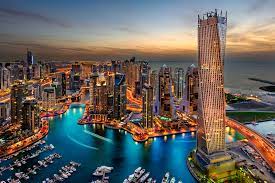
Sign in to your account




The older districts of Dubai cover an area of 1500sq. m. and is called 'Pearl of the Gulf' and 'Jewel of the world' because of its heritage and history.
The population size of the emirate of Dubai is estimated to be 3,355,900 individuals at the end of 2019; of whom 2,331,800 are males and 1,024,100 females.
The higher proportion of males in Dubai community (229 males per 100 females) is attributed to the fact that the majority of expatriate workers are males who are not accompanied by their family members.
For a daily update on the population, you can check the population clock on the website of Dubai Statistics Center.
According to Federal Competitiveness and Statistics Centre. the estimated population of UAE nationals as of 2010 in the emirate of Dubai was:
Males: 84,245
Females: 83,784
Total: 168,029
The emirate is located on the eastern coast of the Arabian Peninsula, in the southwest corner of the Arabian Gulf. It shares its boundaries with Abu Dhabi in the south and Sharjah in the northeast. It shares its international border with the Sultanate of Oman in the southeast. Dubai is roughly 16m. or 52ft. above sea level.
Dubai city is the capital of the emirate. It is characterised by the historic creek, which divides the city into:
In 2016, a new addressing system was launched which involved dividing the emirate into 14 districts.
Dubai has several sandy beaches on its western side, a mangrove at the eastern end of the creek, many deserts in the interior and western regions and wadis in the Hatta region.
Dubai boasts of world-class hotels, modern architecture, entertainment and dining venues, traditional markets, shopping centres and sporting events.
Some of the major tourist attractions in the emirate are the wadis of Hatta, the sail-shaped Burj Al Arab hotel, which is also the world's only seven-star hotel and Burj Khalifa, which is the world's tallest skyscraper.
Enter your Email to get latest news and other post in website